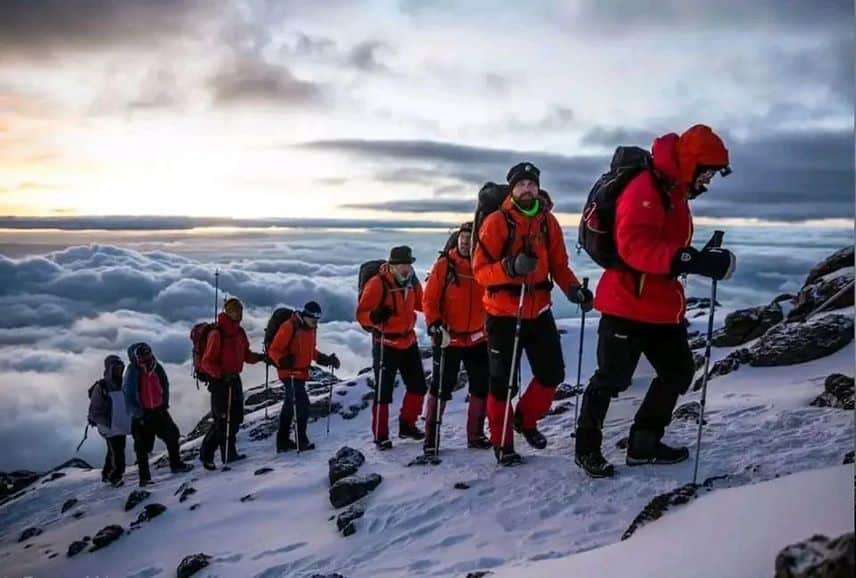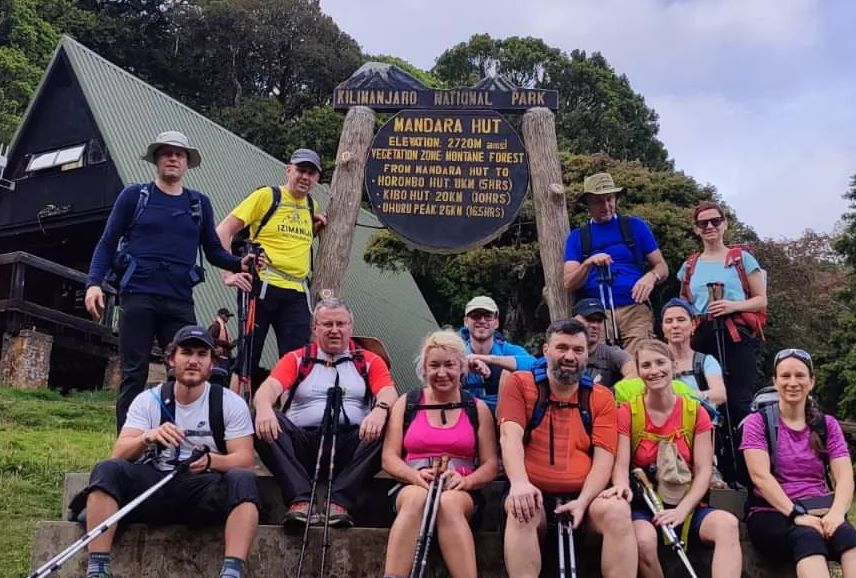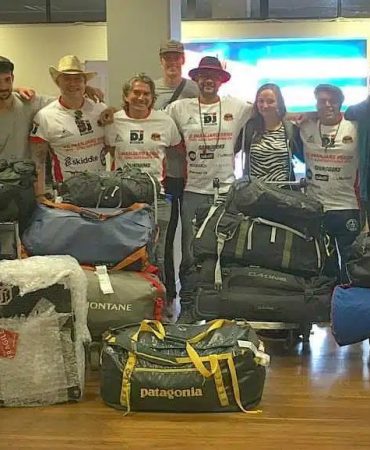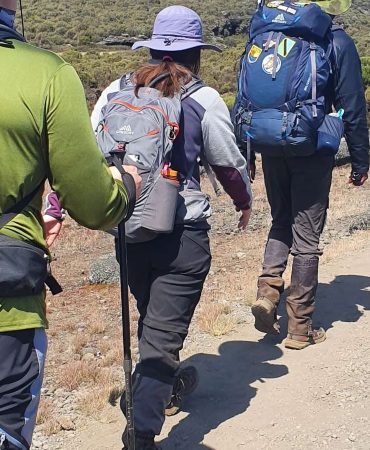Mt Kilimanjaro Tanzania offers the ultimate 7-day trek. Conquer Africa’s tallest peak and enjoy a life-changing adventure with expert guides



Mt Kilimanjaro Tanzania
Introduction
Overview of Mount Kilimanjaro
Mount Kilimanjaro, the highest peak in Africa, stands tall at 5,895 meters (19,341 feet) above sea level. Located in Tanzania, this majestic mountain is part of the Kilimanjaro National Park and attracts thousands of adventurers and nature enthusiasts every year. Known for its breathtaking landscapes and challenging climbs, Kilimanjaro offers a unique blend of ecological zones, from tropical rainforests to arctic conditions at its summit.
Importance of Mount Kilimanjaro as a Travel Destination
Mount Kilimanjaro is not only a natural wonder but also a significant travel destination for those seeking adventure and cultural experiences. Climbing Kilimanjaro is a bucket-list item for many, offering a sense of achievement and an opportunity to witness stunning vistas. Additionally, the mountain plays a crucial role in Tanzania’s tourism industry, contributing to the local economy and supporting conservation efforts.
Geographical Information
Location of Mount Kilimanjaro in Tanzania
Mount Kilimanjaro is situated in northeastern Tanzania, near the border with Kenya. It lies within the Kilimanjaro National Park, a UNESCO World Heritage Site known for its diverse ecosystems and rich biodiversity. The nearest town is Moshi, which serves as the gateway for most climbers heading to the mountain.
Climate and Best Times to Visit
The climate on Mount Kilimanjaro varies significantly due to its elevation. The lower slopes are warm and humid, while the summit experiences freezing temperatures. The best times to visit are during the dry seasons: January to March and June to October. These periods offer more stable weather conditions, making the climb safer and more enjoyable.
Different Routes to Climb Mount Kilimanjaro
There are several routes to climb Mount Kilimanjaro, each offering unique experiences and varying levels of difficulty:
- Marangu Route: Known as the “Coca-Cola Route,” it is the only route with hut accommodations and is considered easier.
- Machame Route: Popularly known as the “Whiskey Route,” it is more challenging and scenic.
- Lemosho Route: Offers beautiful scenery and a higher success rate due to better acclimatization.
- Rongai Route: Approaches from the north and is less crowded.
- Northern Circuit: The longest route, providing excellent acclimatization and stunning views.
- Umbwe Route: The shortest and steepest route, recommended for experienced climbers.
Biological and Environmental Information
Flora and Fauna of Mount Kilimanjaro
Mount Kilimanjaro’s unique ecological zones host a wide variety of flora and fauna. The lower slopes are covered with lush montane forests, home to species like colobus monkeys and elephants. As you ascend, the vegetation changes to moorland with giant heathers and lobelias. The alpine desert zone features sparse vegetation, and the arctic summit zone is almost devoid of life.
Ecological Significance of the Mountain
Kilimanjaro’s diverse ecosystems play a crucial role in maintaining biodiversity and supporting local wildlife. The mountain’s forests act as a vital water catchment area, feeding rivers and streams that supply water to surrounding communities. Conservation efforts are essential to protect these habitats from threats such as deforestation and climate change.
Cultural Insights
Local Tribes and Their Connection to Kilimanjaro
The Chagga people, who inhabit the slopes of Kilimanjaro, have a deep cultural connection to the mountain. They regard it as a sacred site and incorporate it into their traditions and folklore. The Chagga are known for their agricultural practices, cultivating crops like bananas and coffee on the fertile mountain slopes.
Traditions and Myths Surrounding the Mountain
Mount Kilimanjaro is steeped in myths and legends. One popular tale speaks of the mountain being the dwelling place of a deity who protects the Chagga people. Another legend tells of a forbidden glacier at the summit, guarded by spirits. These stories add a mystical allure to the mountain, enriching the cultural experience for visitors.
Must-Visit Attractions
Mount Kilimanjaro National Park
Kilimanjaro National Park is a treasure trove of natural beauty and biodiversity. It offers opportunities for hiking, wildlife viewing, and exploring the diverse landscapes of the mountain. The park’s entrance gates, such as Marangu and Machame, are starting points for various climbing routes.
Kibo Peak
Kibo Peak is the highest point on Mount Kilimanjaro and the main goal for climbers. The Uhuru Peak, located on Kibo’s crater rim, is the ultimate destination, offering panoramic views of the surrounding landscapes. Reaching this peak is a rewarding achievement for climbers.
Mawenzi Peak
Mawenzi Peak, standing at 5,149 meters (16,893 feet), is the second-highest peak on Kilimanjaro. Although it is more rugged and less accessible than Kibo, it presents a challenging climb for experienced mountaineers. The peak’s jagged appearance adds to the dramatic scenery of Kilimanjaro.
Shira Plateau
The Shira Plateau, located on the western side of the mountain, is a vast high-altitude moorland that provides stunning vistas and a variety of hiking trails. It is one of the oldest parts of Kilimanjaro, offering a unique perspective on the mountain’s geological history.
Activities and Experiences
Climbing Mount Kilimanjaro
Climbing Mount Kilimanjaro is a challenging yet rewarding adventure. The experience involves trekking through diverse landscapes, from tropical rainforests to alpine deserts. Each route offers a unique journey, with varying levels of difficulty and scenery.
Wildlife Safaris in the Surrounding Areas
The areas surrounding Mount Kilimanjaro, such as the Amboseli National Park in Kenya and the Arusha National Park in Tanzania, offer excellent opportunities for wildlife safaris. These parks are home to a wide variety of animals, including elephants, lions, and buffaloes.
Cultural Tours with Local Tribes
Engaging in cultural tours with local tribes, such as the Chagga, provides insight into the rich heritage and traditions of the people living around Kilimanjaro. Visitors can learn about traditional farming practices, local cuisine, and folklore.
Travel Tips
How to Get to Mount Kilimanjaro
Travelers can reach Mount Kilimanjaro by flying into Kilimanjaro International Airport (JRO), located between Moshi and Arusha. From there, it is a short drive to the main towns and the starting points of the climbing routes.
Choosing the Best Route for Your Climb
Selecting the best route for your Kilimanjaro climb depends on factors such as fitness level, experience, and time availability. Researching each route’s difficulty, scenery, and success rates can help climbers make an informed decision.
Packing Essentials for the Journey
Essential items to pack for a Kilimanjaro climb include:
- Warm clothing and layers
- Sturdy hiking boots
- Sleeping bag and mat
- Sun protection (hat, sunglasses, sunscreen)
- Trekking poles
- Hydration system (water bottles or hydration packs)
- First aid kit and personal medications
Safety and Health Precautions
Altitude Sickness and How to Prevent It
Altitude sickness is a common concern for climbers. Symptoms include headaches, nausea, and fatigue. To prevent altitude sickness, climbers should:
- Ascend slowly and acclimatize properly
- Stay hydrated and maintain a balanced diet
- Avoid alcohol and smoking
- Use medications like acetazolamide if recommended by a doctor
Essential Vaccinations and Health Tips
Before traveling to Tanzania, ensure you are up-to-date with routine vaccinations and receive travel-specific vaccines such as:
- Yellow fever (mandatory)
- Hepatitis A and B
- Typhoid
- Rabies (for extended stays or high-risk activities)
- Malaria prophylaxis is also recommended
Safety Measures for Climbers
To ensure safety while climbing Kilimanjaro, follow these measures:
- Choose a reputable tour operator with experienced guides
- Follow the guidance of your guides and listen to your body
- Carry a comprehensive first aid kit
- Ensure you have travel insurance that covers high-altitude trekking
Budget Planning
Cost of Climbing Mount Kilimanjaro
The cost of climbing Kilimanjaro varies depending on the route, duration, and level of service. On average, a climb can cost between $1,500 to $4,000 per person, including park fees, guides, porters, and accommodations.
Budget-Friendly Tips for Travelers
To save money on your Kilimanjaro adventure, consider these tips:
- Travel during the shoulder seasons to get better rates
- Join group tours to share costs
- Book well in advance to secure discounts
- Opt for budget accommodations and services
Recommended Budget for Different Types of Climbers
- Budget Climbers: $1,500-$2,000 for basic services and group tours
- Mid-Range Climbers: $2,000-$3,000 for more comfortable accommodations and personalized services
- Luxury Climbers: $3,000-$4,000+ for premium services and private tours
Local Cuisine
Traditional Dishes to Try in Tanzania
Tanzanian cuisine offers a variety of delicious dishes, including:
- Ugali: A maize porridge often served with meat or vegetable stews
- Nyama Choma: Grilled meat, typically goat or beef, served with sides like rice or chips
- Zanzibar Pilau: A spiced rice dish with meat or seafood, influenced by Swahili cuisine
Popular Drinks and Beverages
Popular beverages in Tanzania include:
- Safari Lager and Kilimanjaro Beer: Local beers enjoyed by many
- Dawa: A cocktail made with honey, lime, and vodka, popular in coastal areas
- Fresh Fruit Juices: Made from tropical fruits like mango, pineapple, and passion fruit
Dining Etiquette in Tanzania
When dining in Tanzania, follow these etiquette tips:
- Use your right hand for eating, as the left hand is considered unclean
- Wait for the host to invite you to start eating
- Show appreciation for the meal by thanking the host
Frequently Asked Questions (FAQs)
Why is Mount Kilimanjaro so Famous?
Mount Kilimanjaro is famous for being the highest peak in Africa and one of the Seven Summits, attracting climbers and adventurers from around the world. Its unique ecological zones, cultural significance, and stunning vistas add to its allure.
Is Mt Kilimanjaro Hard to Climb?
Climbing Mount Kilimanjaro is challenging due to the high altitude and varying terrain. However, with proper preparation, acclimatization, and determination, many climbers successfully reach the summit each year. Choosing the right route and taking the climb slowly can increase the chances of success.
How Many People Died on Kilimanjaro?
While exact numbers vary, it is estimated that approximately 10 climbers die on Kilimanjaro each year. The main causes of death include altitude sickness, falls, and hypothermia. Proper preparation and following safety guidelines can minimize risks.
Where is Mount Kilimanjaro Found in Tanzania?
Mount Kilimanjaro is located in northeastern Tanzania, near the border with Kenya. It is part of the Kilimanjaro National Park, a UNESCO World Heritage Site, and is accessible from the town of Moshi.
Conclusion
Summary of Key Points
Mount Kilimanjaro, the highest peak in Africa, offers a unique blend of adventure, natural beauty, and cultural richness. From its diverse ecological zones to the challenging yet rewarding climbs, Kilimanjaro is a must-visit destination for nature lovers and thrill-seekers alike.
Final Tips and Recommendations
When planning your trip to Kilimanjaro, choose reputable tour operators, pack appropriately for the climate, and follow health and safety guidelines. Engaging in cultural tours and supporting local communities can enhance your travel experience.
Encouragement to Explore Mount Kilimanjaro
Mount Kilimanjaro’s majestic beauty and rich biodiversity make it an unforgettable destination. Whether you are an experienced climber or a nature enthusiast, exploring Kilimanjaro will leave you with lasting memories and a deep appreciation for this natural wonder.




